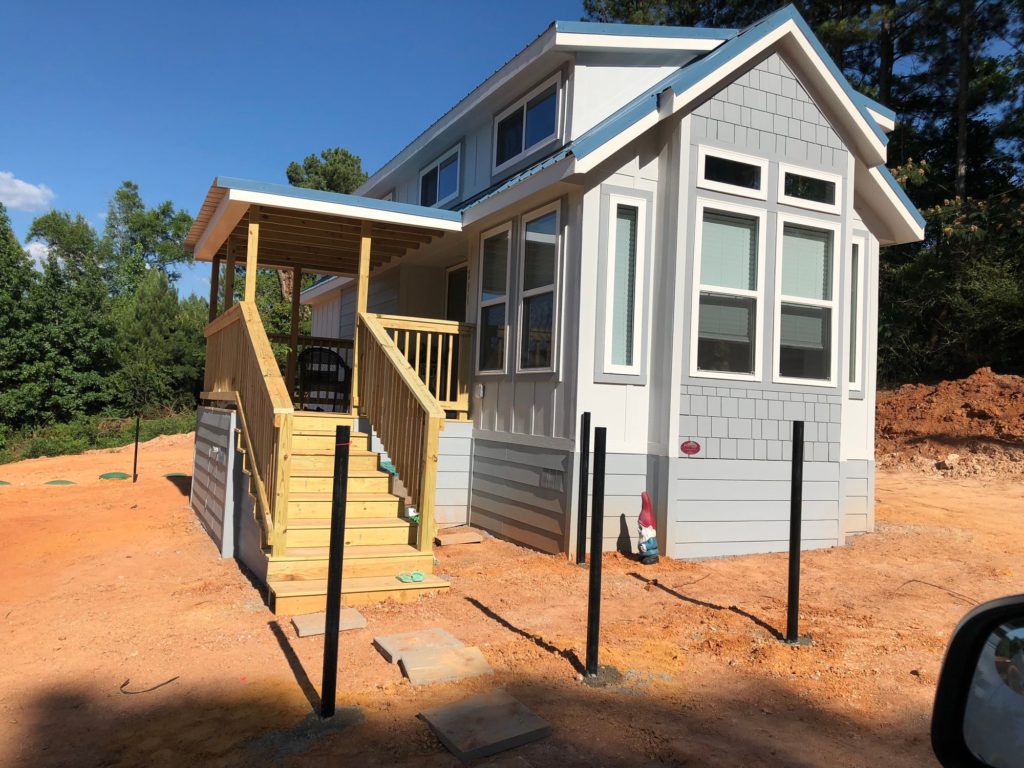[ad_1]
Some will say that tiny homes are a fad, but the trend is still going strong. In fact, the market is set to grow by $3.57 billion between 2022 and 2026, according to a report by the Global Tiny Homes Market.
A survey by Angi‘s HomeAdvisor discovered that 86% of respondents would move into a tiny home. Not surprisingly, 56% cited affordability as the major proponent of living in a tiny home, though it bears noting that square foot for square foot, one can be more expensive than your regular-sized home.
HomeAdvisor says that while a tiny home can certainly cost far less overall to build than a typical home, they do run anywhere from $150 to $400 per square foot, while larger homes are usually around $100 to $200 per square foot. Still, even the most luxurious 400-square-foot tiny home at those costs would have a price tag of $160,000 — far below the median price of $425,000 for existing homes as of April, per data from Realtor.com.
The tight housing market has made it difficult for some beginning real estate investors to break in without breaking the bank. Bidding wars are common, and now with higher mortgage rates, homeownership has gotten that much more expensive. But tiny homes are affordable enough to be paid for in cash or financed with a home equity loan, so it’s entirely possible to add a brand-new property to your portfolio for the price of the very down payment you were looking to apply to an existing home.

Image source: Getty Images.
If you’ve considered tiny homes as an investment, here are three ways that strategy could pay off in a big way.
1. Add an income-producing accessory dwelling unit
Of respondents, 50% said they would add a tiny home to their property for the additional income, whether renting it out as an apartment or even as office space for a remote employee. For investors looking to expand their portfolios, this is a great option because they don’t have to go through the trouble of buying an additional property or land. They will have to abide by zoning laws, of course, but in areas where it is permissible, accessory dwelling units (ADUs) are being hailed as a way to relieve the housing crunch in many markets.
2. Turn a single-family property into a multifamily home
For investors in the multifamily housing market, tiny homes represent a unique opportunity to turn an existing single-family home into a multifamily home. Depending on your local zoning laws, you can add a tiny home to your property as an in-law suite or a small apartment for adult children. There’s a demand for this sort of setup: According to Pew Research Center, there are four times as many multigenerational households now than in the 1970s — coincidentally, the time that the modern tiny home trend began.
3. Make money on it as a quirky vacation rental
While only around 30% of the HomeAdvisor survey respondents said they’d be willing to buy a tiny home, many more said they wouldn’t mind living in one for a short time. If you’re in the market to turn your tiny home into a short-term rental, you could have a nice income stream — bonus points if your home is especially unique-looking or is in a desirable location.
Online vacation listing sites make it easy to market your unique listing; for example, visit the Airbnb website, and you’ll find an entire category devoted to tiny homes. Some nightly rentals run less than $100 — far less than a hotel room or a night’s stay at a regular-sized vacation home — but depending on how much you paid to construct the tiny home, you’ll break even and start turning a profit much sooner than with a regular-sized vacation rental.
Could tiny homes pay off big for your investment portfolio?
If you’re looking to crack the vacation rental or multifamily market, a tiny home could be the right move. When used as a way to transform a single-family home into a multifamily home, you are looking at a tidy profit at resale, particularly as more and more homebuyers look to move in with older or younger generations of their family. However, it’s rental investors who stand to make the most profit with tiny homes as vacation retreats or as income-producing ADUs, ideal for tenants looking to downsize and/or live simply.
[ad_2]
Source link
